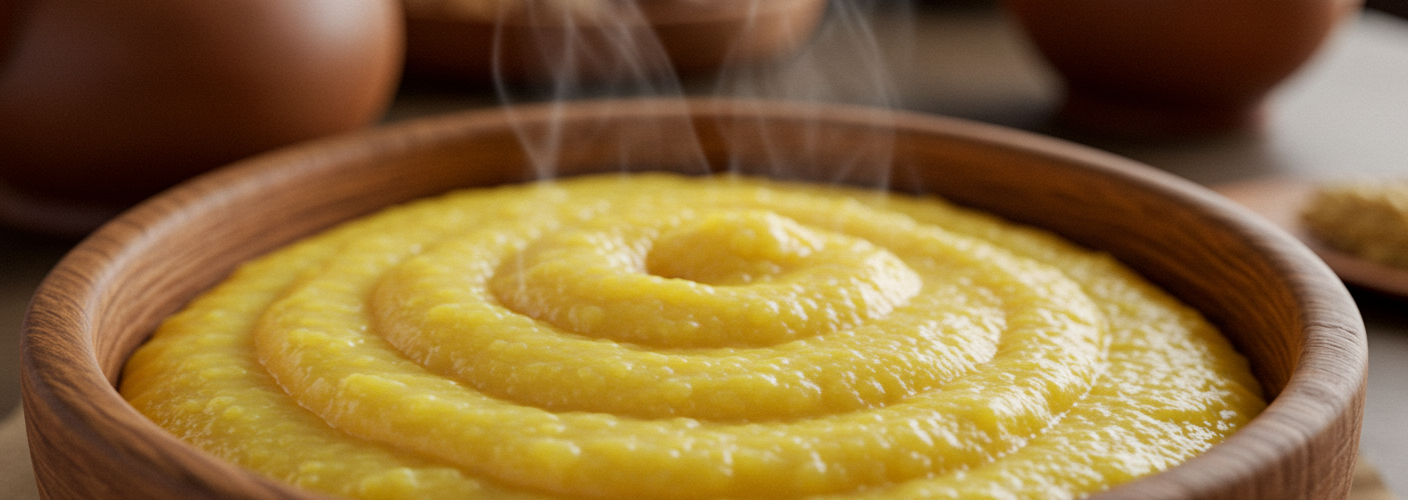Mamaliga, a dish deeply rooted in the culinary traditions of Eastern Europe, particularly Romania and Moldova, is a delightful porridge made from yellow maize flour. This versatile dish is more than just a staple food; it holds cultural significance and showcases the region’s agricultural heritage.
At its core, mamaliga is a simple preparation of maize flour cooked in boiling water, creating a rich and hearty porridge. The process of making mamaliga is straightforward yet requires attention and care to achieve the perfect consistency. The flour is added gradually to boiling water and stirred continuously to avoid lumps, resulting in a smooth, creamy texture that is both satisfying and comforting. Traditionally, the dish is often served with a bit of salt, butter, or cheese, enhancing its flavor and making it even more enjoyable.
Mamaliga is notoriously versatile. It can be served as a side dish or a main course, accommodating a variety of other ingredients and flavors. One popular way to enjoy mamaliga is alongside stews, grilled meats, or as a base for dishes like sarmale (cabbage rolls) or mămăligă cu brânză (mamaliga with cheese). It also serves as an excellent complement to meats, offering a balance to the richer, more savory flavors.
Beyond its delicious taste, mamaliga is a source of comfort and nostalgia for many who grew up enjoying this dish. Often prepared during family gatherings or festive occasions, it signifies tradition and togetherness. In rural areas, it is not uncommon for families to gather around a shared pot of mamaliga, reflecting the communal spirit of Eastern European culture.
For those who have yet to experience mamaliga, it’s worth noting that this dish is incredibly easy to prepare at home. All you need is quality yellow maize flour, water, and a pinch of salt. The basic ratio is usually about one part flour to four parts water, but this can be adjusted based on personal preference for thickness.
Once prepared, the mamaliga can be served in several creative ways. It can be poured onto a wooden board to set and then cut into slices, which can be grilled or fried for a crispy texture. Some enjoy it as a warm bowl, topped with sour cream and fresh herbs, while others might opt for a sprinkle of feta cheese or a drizzle of honey for a unique twist.
In modern kitchens, mamaliga showcases its adaptability, merging traditional recipes with contemporary culinary trends. Health-conscious cooks appreciate it as a gluten-free option rich in carbohydrates and fiber while being low in calories. Its ability to pair well with a variety of ingredients makes it suitable for those following vegetarian or vegan diets, especially when prepared with plant-based toppings.
In conclusion, mamaliga is much more than just a basic porridge; it is a celebration of heritage, community, and culinary innovation. Whether enjoyed as a simple meal or dressed up for a festive occasion, mamaliga continues to bring people together, reminding us of the joy found in sharing food and tradition. So next time you’re looking for a comforting dish that embodies the heart of Eastern European cuisine, don’t overlook the humble yet remarkable mamaliga.




Add comment